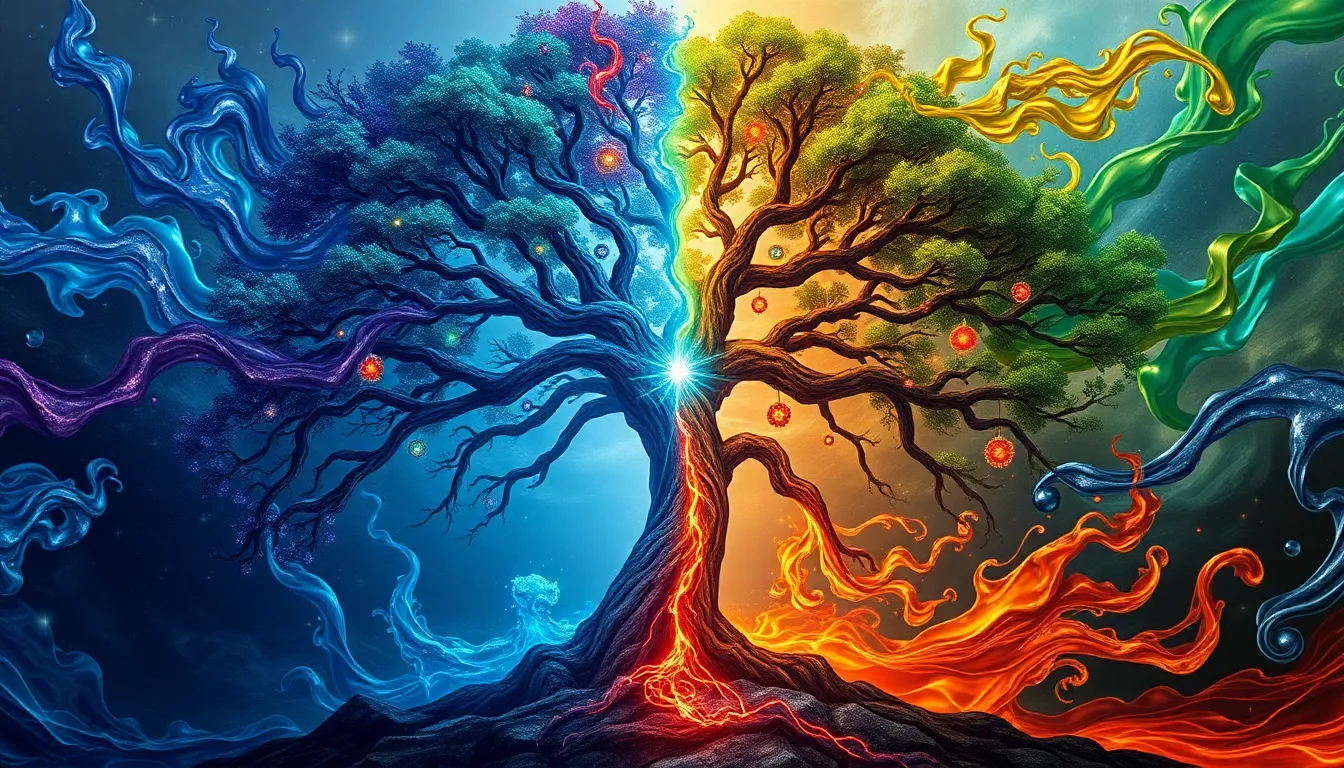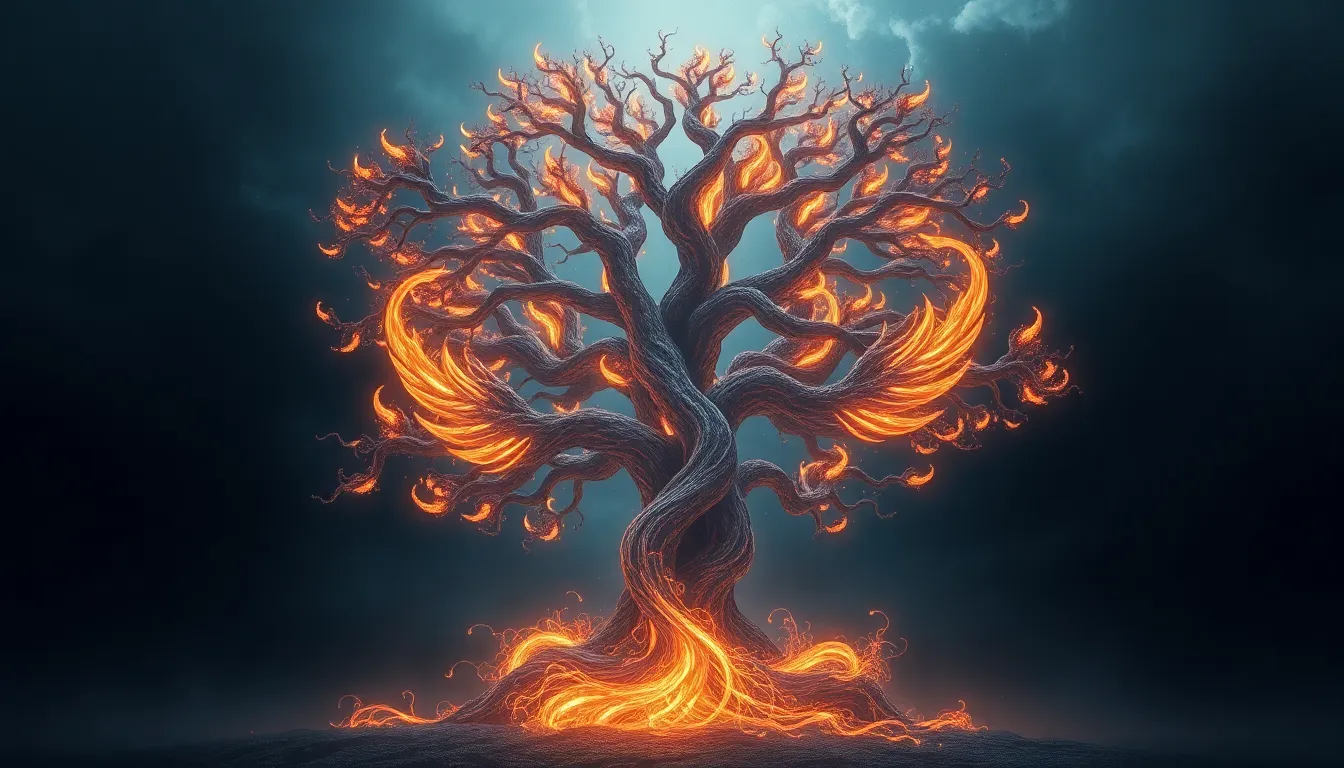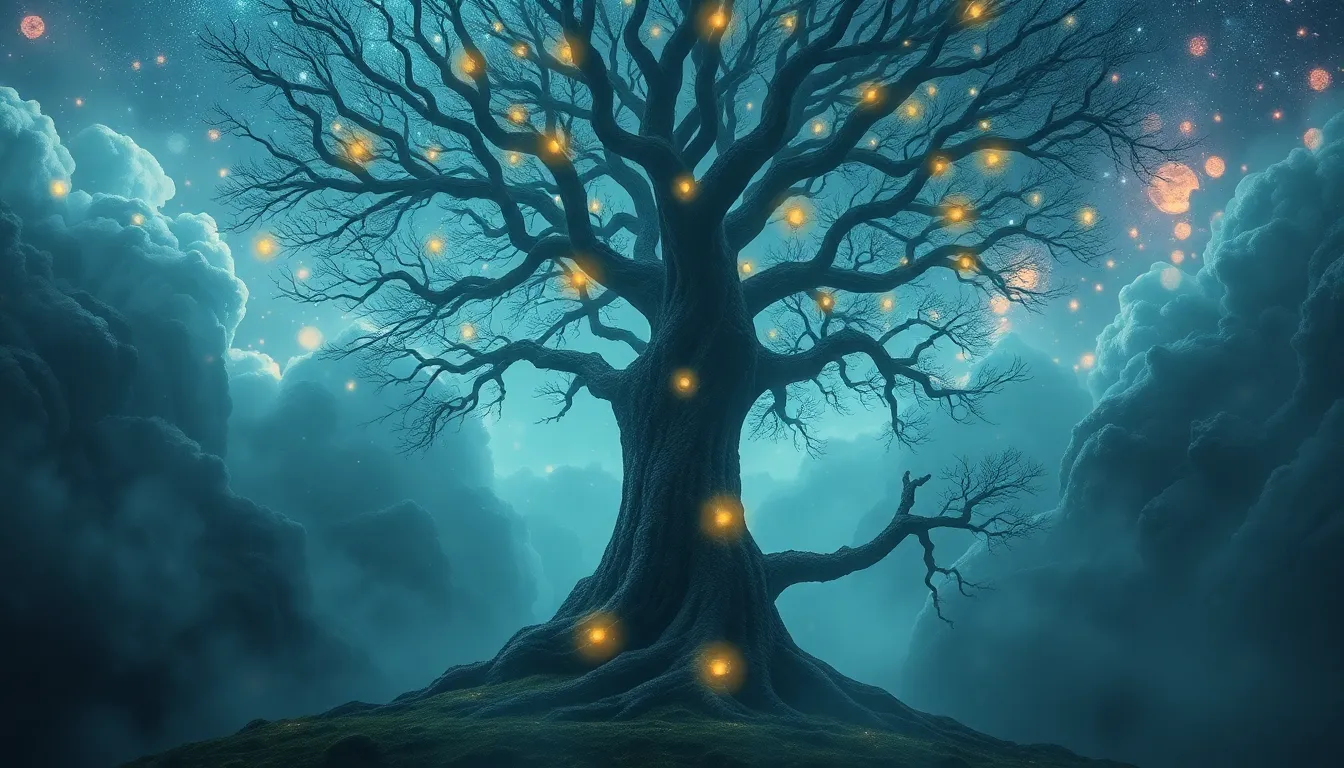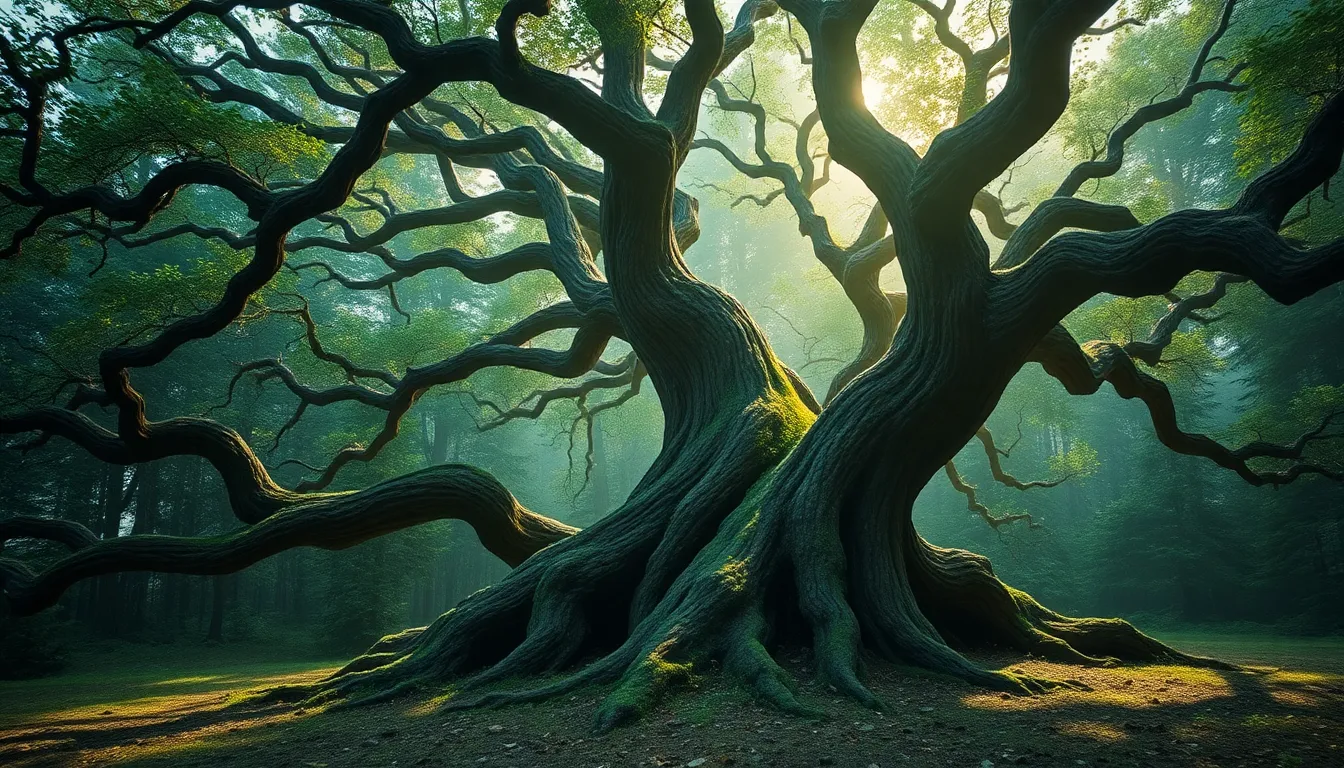The Tree of the Elements: Myths of Earth, Air, Fire, and Water
Introduction to the Tree of the Elements
The Tree of the Elements is a profound symbol that resonates across various cultures and mythologies, representing the interconnectedness of Earth, Air, Fire, and Water. This concept not only highlights the significance of each element but also emphasizes their roles in the cycle of life, creation, and destruction. The Tree serves as a reminder of how these fundamental forces shape our existence and the world around us.
The Symbolism of the Tree in Mythology
Trees have long been revered in mythology as symbols of life, growth, and connection to the divine. They often embody the universe, with roots anchored in the Earth, branches reaching towards the heavens, and leaves that whisper the secrets of the winds. The Tree of Life, in particular, connects deeply with the four elements:
- Earth: Represents stability and nourishment.
- Air: Symbolizes breath and the spirit.
- Fire: Embodies transformation and energy.
- Water: Signifies fluidity and life-giving force.
Earth: Myths and Legends
Throughout history, Earth has played a central role in creation myths. Many cultures describe how the Earth was formed from chaos or primordial waters, giving rise to life. Notable deities associated with Earth include:
- Gaia: The Greek personification of Earth, often regarded as the mother of all life.
- Pachamama: The Incan goddess of fertility and the Earth, revered in Andean cultures.
The symbolism of Earth is rich, encompassing soil, mountains, and plants. Myths often depict Earth as a nurturing mother, providing sustenance and shelter while representing the cycle of life, death, and rebirth through agriculture and nature.
Air: The Breath of Life
Air is often associated with the divine and the essence of life itself. It is seen as a bridge between the physical and spiritual worlds. Myths surrounding Air frequently involve:
- Aeolus: The Greek god of the winds, who controlled the winds and storms.
- Wind Gods: Various cultures have deities representing winds, symbolizing change and movement.
Culturally, air is interpreted as a life-giving force, essential for existence. It symbolizes thoughts, communication, and the intangible aspects of life. The concept of breath, or “prana,” in many spiritual traditions emphasizes the vital role of air in sustaining life.
Fire: Transformation and Destruction
Fire embodies a dual nature in mythology, acting both as a creator and a destroyer. It represents transformation, passion, and energy. Prominent myths and deities include:
- Prometheus: The Titan who defied the gods by stealing fire and giving it to humanity.
- Vulcan: The Roman god of fire and craftsmanship, associated with volcanoes and metalworking.
Fire’s significance extends into rituals and cultural practices, symbolizing purification, renewal, and the spirit’s transformative power. However, it also serves as a reminder of destruction and chaos, highlighting the need for balance and respect for its power.
Water: The Source of All Life
Water is often regarded as the source of life and fertility. Many creation myths emphasize its importance, depicting how water nurtures and sustains all forms of life. Major water deities include:
- Poseidon: The Greek god of the sea, earthquakes, and horses, symbolizing the power of the ocean.
- Yemaya: The Afro-Caribbean goddess of the sea, representing motherhood and fertility.
Water’s symbolism is profound, encompassing rivers, oceans, and rain, which are essential for life. In many cultures, water is seen as a cleansing force, representing renewal and the cycle of life.
Interconnection of the Elements within Myths
The interactions of Earth, Air, Fire, and Water are often depicted in mythology as essential to maintaining balance in the universe. Stories illustrate both the harmony and conflict among the elements. For instance:
- In some myths, Earth is portrayed as the grounding force, while Air brings change and movement.
- Fire may consume Earth but also provide warmth and energy, showcasing their interdependence.
- Water can nourish Earth but also flood and destroy, emphasizing the need for respect and balance.
This interplay reflects the concept of harmony and duality in elemental myths, where each element plays a vital role in the cycle of life.
Modern Interpretations of Elemental Myths
Ancient elemental myths continue to resonate in contemporary culture, influencing literature, art, and spirituality. They offer profound insights into human existence and our connection to nature. Modern interpretations include:
- Literature that draws from elemental themes, exploring characters’ relationships with nature.
- Art that represents the beauty and power of the elements, reminding us of their significance.
- Eco-spirituality movements that emphasize reverence for nature and the interconnectedness of all life.
These interpretations underscore the relevance of ancient myths in addressing modern environmental concerns and fostering a deeper connection to the natural world.
Lessons from the Myths of the Elements
The myths of Earth, Air, Fire, and Water impart valuable lessons about balance, respect, and sustainability. Key reflections include:
- The importance of maintaining harmony with nature to ensure the survival of all life forms.
- Understanding the interconnectedness of the elements and their role in the ecosystem.
- Recognizing our responsibility to protect and preserve the environment for future generations.
By embracing these lessons, we can cultivate a deeper appreciation for the natural world and strive for a sustainable future that honors the wisdom of the ancients.



